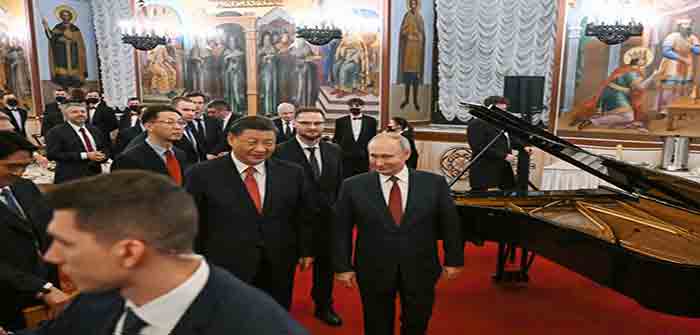
Editor’s note: The T-Room covered all three major events. Never hurts to remind our readers…
by Ted Snider at AntiWar.com
With global media attention focused away from the war in Ukraine, several key events happened that the world didn’t enough notice. One continues to shape the state of global relations, one continues to shape the state of diplomacy toward ending the war, and one continues to shape the state of the battlefield.
The State of International Relations
The wider context of the war in Ukraine is the struggle on the global stage between US led unipolarity and the multipolarity preferred by Russia, China and the global south, or what Russia calls “the global majority.”
Russian foreign minister Sergey Lavrov spoke to his audience at the High-Level International Conference Eurasian Security of the “stage of truly landmark tectonic change” that the international community has entered. Putin has used the same phrase. What the world is witnessing, Lavrov said, is “the rise of a new and fairer multipolar world order.” This rise, this tectonic change, has “met with tenacious resistance from the Western minority,” Lavrov said. “The United States and its satellites are not trying to hide their motives – they are determined to maintain their dominance and monopolise the entitlement to make globally significant decisions.”
But, despite that resistance, the rebalancing of the international order was recently on display at the fifteenth annual BRICS summit in South Africa where a multitude of countries lined up at the door to enter the multipolar organization, and six countries – Argentina, Egypt, Ethiopia, Iran, Saudi Arabia, and the United Arab Emirates – did.
It was also recently on display in Beijing where Russia and China, leading advocates of the multipolar world, continued to build their “comprehensive strategic cooperative partnership” that is “superior to political and military alliances of the Cold War era” and has “no limit.”
On display for the world,…
Continue Reading